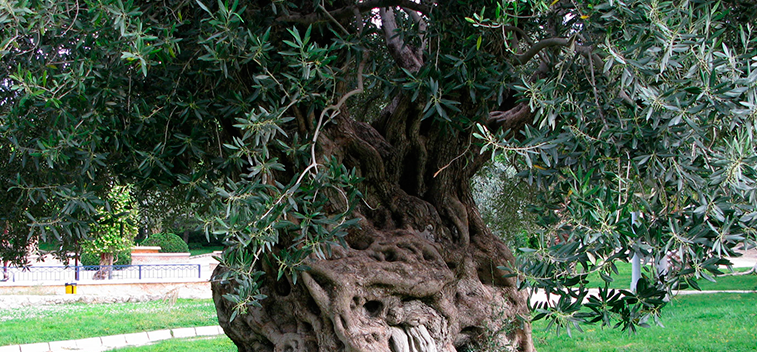
Researchers from the Centre for Genomic Regulation (CRG) in Barcelona, the Royal Botanical Garden in Madrid (CSICRJB) and the National Centre for Genomic Analysis in Barcelona (CNAG-CRG) have succeeded in sequencing the whole genome of the olive tree for the first time.
The scientists managed to decode the sequence of the more than 56,000 genes from the genome of a specimen of olive tree that is more than 1,300 years old. The specimen is of the farga variety, one of the most widespread types of olive tree in Eastern Spain.
The results of this highly significant breakthrough will shed light on the enigmatic evolutionary history of the tree and allow experts to identify how some of its characteristics can be improved. These include its productivity, the sensory qualities of its fruit, its resistance to diseases and its adaptability to the scarcity of water.
The olive tree is without doubt an emblematic tree in the Mediterranean region and progress in plant breeding has always been difficult in this species. This is because it is necessary to wait 12 years for it to develop in order to discover its morphological characteristics and whether it is worth crossing it with other varieties. With the whole genome of the tree now sequenced, it will no longer be necessary to wait so long to find out the characteristics of the variety in question.
The sequencing project took 3 years and was carried out in 3 stages: first, the isolation of all the genes. Second, assembling the genome, or ordering those genes one after another. Third, identifying all the genes.
As well as the complete sequencing of the olive tree genome, the researchers also compared the DNA of the tree with that of other varieties, such as the acebuche (a type of wild olive tree) and obtained the transcriptome. This refers to the genes which help us to determine what differences there are in the genetic expression in leaves, roots and fruit.
The gene map of the olive tree has generated more than 1,000 gigabytes of data, and in fact with over 56,000, the olive tree has more genes than other plants for which we have the whole genome sequences. For example, chick pea plants have 28,269, while tomato plants have around 35,000 organised into 12 chromosomes.
The next step, say the scientists, will be to decipher the evolutionary history of the olive tree, which has been so valuable to old-world civilisations since the bronze age. What's more, with a possible lifespan of up to 4,000 years, they have amazing longevity.